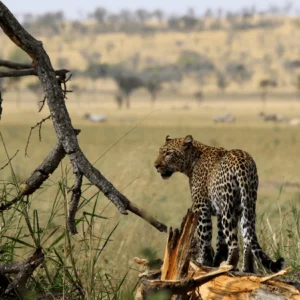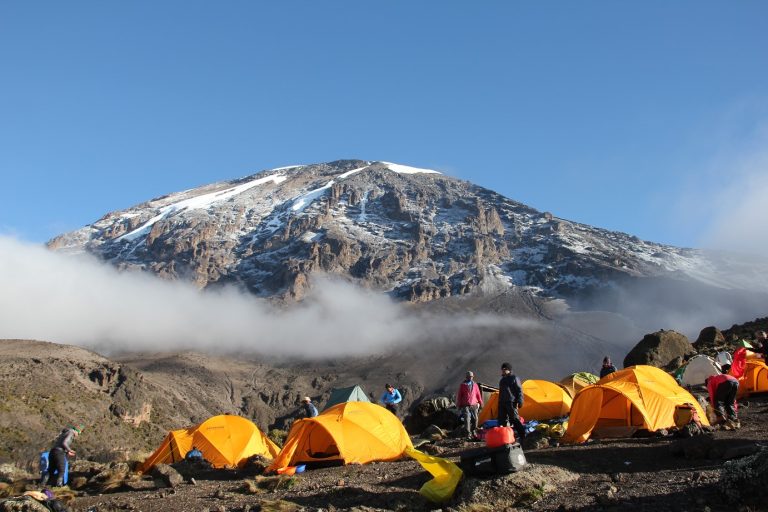A Wilder View: How fast can an Antelope Run? (Antelope Top Speed in Km/h) .
The animal kingdom is teeming with fascinating creatures. Each uniquely adapted to its environment. Among these, antelopes stand out as remarkable examples of agility and speed. A renowned for their swift movements, a crucial trait that aids in survival and evading predators. In this article, we delve into the world of antelopes. Exploring their incredible speed and the factors that contribute to their prowess on the run. Book your Tanzania Safari Now.
Antelopes renowned for their incredible speed, a key adaptation that allows them to evade predators in open habitats. Their running ability is not just a single top speed but a complex interplay of acceleration, agility, and endurance, all contributing to their survival. The term “antelope” itself covers a wide range of species, and their top speeds vary significantly depending on the species and the specific circumstances of the chase.
The Need for Speed:
The top speed of an antelope varies widely across different species, but all masters of speed and agility. Their ability to run at incredible velocities testament to the power of natural selection, a finely tuned adaptation for survival in a dangerous world. From the blazing speed of the springbok to the enduring sprint of the pronghorn, these animals truly some of the fastest and most magnificent runners on Earth. Antelopes are native to various regions of Africa and parts of Asia. They belong to the family Bovidae, which also includes goats, sheep, and cattle. One of the defining features of antelopes their exceptional speed. A trait that has evolved as a response to the constant threat of predation. The ability to outrun predators is essential for their survival. And antelopes have evolved to become some of the fastest land mammals.
Average Speed of Antelopes:
The speed of antelopes can vary among different species, but as a general rule. These creatures are known for their impressive acceleration and sustained high speeds. On average, antelopes can reach speeds ranging from 50 to 60 miles per hour (80 to 97 kilometers per hour).
Factors Influencing Antelope Speed:
Antelope speed is influenced by specialized adaptations. Their slender bodies, elongated limbs, and flexible spines maximize stride efficiency. A highly efficient respiratory system boosts oxygen intake, aiding endurance. Group behavior enhances survival through the “confusion effect,”. Making it difficult for predators to target a single individual. These factors collectively contribute to the remarkable speed of antelopes, reaching 50 to 60 miles per hour in their quest for survival.
Age and Health
An antelope’s speed generally peaks in its prime adult years. Younger antelopes lack the full muscle development and stamina, while older ones experience a natural decline in physical capabilities. Health issues, such as injury, illness, or parasites, can significantly reduce an antelope’s ability to run at top speed.
Terrain
The surface on which an antelope is running has a major impact. They are fastest on flat, firm ground, where their hooves can get maximum traction. Soft sand, rocky ground, or dense vegetation can impede their stride and reduce their speed.
Motivation
An antelope’s motivation is a crucial factor. The highest speeds are typically achieved during a high-stakes event, such as an escape from a predator or a life-or-death situation. In less urgent scenarios, like fleeing a minor threat, they may not run at their absolute maximum speed.
Physical Condition
Just like an athlete, an antelope’s physical condition, including its fatigue level and nutritional state, directly affects its performance. An antelope that is well-fed and rested will be able to run faster and for longer than one that is hungry or exhausted.
Body Structure and Musculature ‘
Different antelope species have evolved unique body structures and musculature tailored for speed. These adaptations include long, slender legs and powerful hindquarters. Which allows for explosive propulsion. The muscles are rich in fast-twitch fibers, ideal for short bursts of speed rather than long-distance endurance.
Respiratory System
An antelope’s highly efficient respiratory system is vital for high-speed running. They have large lungs and a high capacity for oxygen intake, which allows them to sustain the immense aerobic demands of sprinting. Their cardiovascular system can pump blood quickly to the muscles, preventing oxygen deprivation.
Skeletal Adaptations
Skeletal adaptations key to an antelope’s speed. Their flexible spines and long limbs act as springs, increasing stride length. The bones are lightweight yet strong, and their hooves are designed to absorb shock while providing good grip.
Behavioral Strategies
Beyond pure physical ability, an antelope’s behavioral strategies can influence its ability to escape a predator. These include zig-zagging, sudden changes in direction, and running in a herd to create confusion. These tactics, combined with their speed, increase their chances of survival.
Here are some fun facts about antelopes:
Antelopes known for their speed, with some species capable of reaching 55 mph, and their distinctive horns, which are permanent and used for displays of dominance. There are nearly 100 different species, most found in Africa, and they live in herds, relying on their senses and speed to evade predators.
Speedsters: Some antelopes are incredibly fast, with the impala being the second fastest mammal after the cheetah.
Horned Wonders: Antelope horns vary greatly in shape, from straight and pointed to curved and spiraled, depending on the species.
Social Creatures. Antelopes live in herds, which can range from a few individuals to hundreds, and they often follow other animals like zebras to find good grazing spots, according to a resource for homework help.
Communication. Antelopes use scent glands to mark territory and communicate with other members of their herd.
Diverse Habitats. Antelopes can be found in a variety of habitats, from savannahs and forests to deserts and swamps, according to a science website for kids.
Not all antelopes are Gazelles. While all gazelles are antelopes, not all antelopes are gazelles, notes a resource for homework help.
Exceptional Jumpers. Some antelopes are capable of leaping impressive distances, with some species jumping up to 33 feet and 10 feet high.
Permanent Horns. Unlike deer, antelope horns are permanent and continue to grow throughout their lives, according to a website for kids.
Diverse Diets. Antelopes consume a variety of plants, including grasses, shoots, and seeds, and they are known to follow the rains to find fresh grazing areas.
Even-Toed Hooved Mammals. All antelopes have even-toed hooves, says a kids’ encyclopedia, and are ruminants, meaning they chew their cud.
FAQs: How fast can an antelope run
- Antelopes, order Antilopidae, are the fourth fastest animal in the world.
- Peregrine falcons and golden eagles are the two fastest animals in the world, surpassing the antelope in full speed.
- Cheetahs and caracals (African golden cats are the third fastest cat but falls short of the fastest bracket) are the second fastest animals in the world. Running at top speeds of 110+ miles per hour, even faster than an antelope.
- Painted, grey, coyote, and maned wolves are the fastest wolf species that definitely can outrun and outpace an antelope very easily, making them the third fastest animal in the world.
What is the fastest species of antelope?
The title of the fastest antelope species is often attributed to the Pronghorn (Antilocapra americana). Which is not technically an antelope but is commonly referred to as such. Pronghorns can reach speeds of up to 55 miles per hour (88 kilometers per hour) and are native to North America.
How far can antelopes run at top speed?
Antelopes are capable of sustaining their top speed for relatively long distances. While the exact distance can vary, they can cover several miles at their maximum speed, allowing them to outlast predators in pursuit.
Do all antelope species have the same level of speed?
No, different antelope species exhibit variations in speed. Usually antelopes are known for their agility and rapid movements, the exact speed can vary based on factors such as body size, environmental conditions, and evolutionary adaptations.
Why do antelopes run in zigzag patterns when chased by predators?
The zigzag running pattern observed in antelopes is a defensive mechanism. This erratic movement makes it challenging for predators to predict their next move, increasing the likelihood of escape. The zigzagging behavior is a form of evasion that takes advantage of the antelope’s agility.
Top 10 Fastest Antelope Species in Africa
The fastest antelope species in Africa include the Tsessebe, Springbok, and Blue Wildebeest. Tsessebe can reach speeds of over 90 km/h, while Springbok are known for their powerful leaps and sharp turns, reaching speeds up to 88 km/h. Blue Wildebeest, while not the absolute fastest, are still incredibly fast and play a crucial role in the annual migrations across the African plains.
Tsessebe: These large, gregarious antelope are among the fastest, recorded at speeds exceeding 90 km/h.
Springbok: Known for their impressive leaps and agility, Springbok can reach speeds up to 88 km/h.
Blue Wildebeest: These antelope are known for their speed, especially during migrations, and can reach speeds of up to 80 km/h,
Impala: Widespread and abundant, Impala are known for their speed and agility, reaching speeds of 60-80 km/h, according to Africa Geographic.
Grant’s Gazelle: These gazelles can reach speeds of 64-80 km/h.
Hartebeest: Another fast antelope, Hartebeest can run at 70-80 km/h.
Roan Antelope: While not as fast as some others on this list, the Roan Antelope is still powerful and relatively swift.
Topi: These antelopes are known for their speed and agility, and they are often found in open grasslands.
Thomson’s Gazelle: These gazelles are known for their speed and graceful movements.
Sable Antelope: While not as fast as some others, the Sable Antelope is still powerful and swift.
Antelope vs Gazelle: Features, Speed & Size, Comparison, difference, Adaptations
African Antelopes: Characteristics, Adaptations & Species List
Meet the antelopes of Serengeti National Park
Interesting Facts to Know About Hippos
Horned Animals of Africa (Complete List)
Final thought
In the intricate tapestry of the natural world, antelopes emerge as exemplars of speed and grace. Their ability to reach astonishing speeds. A testament to the wonders of evolution and the adaptive strategies. Developed in response to the perpetual dance between predator and prey. Understanding the factors that contribute to the impressive speed of antelopes. Offers a glimpse into the intricate web of nature’s design. Where every adaptation serves a purpose in the relentless pursuit of survival







